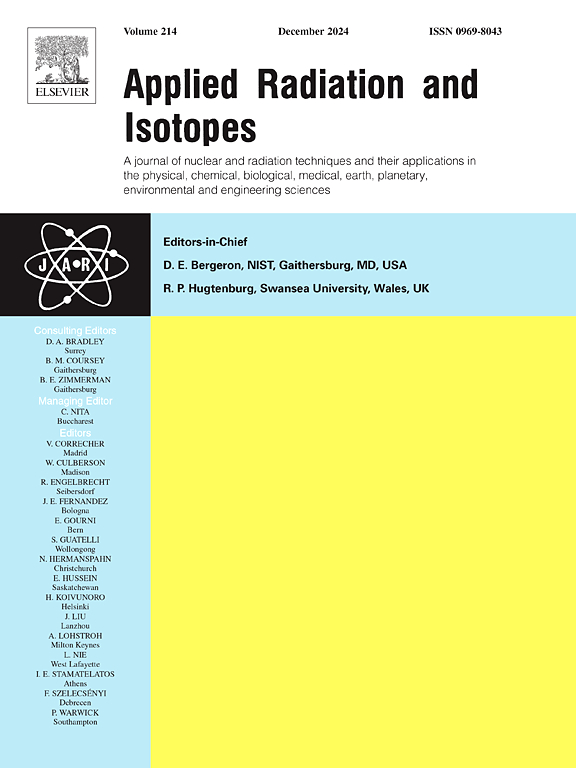Enhancing X-ray quality and dose reduction: Evaluation with additional filters, Contrast-Detail Phantom and Monte Carlo simulation
IF 1.6
3区 工程技术
Q3 CHEMISTRY, INORGANIC & NUCLEAR
引用次数: 0
Abstract
Purpose:
In radiology, achieving high image quality while minimizing radiation dose exposure is essential. For these purpose, understanding the technical parameters affecting both dose and image quality is crucial.
Methods:
This study aimed to evaluate, through both experimental and computational approaches, different combinations of additional filters of 0.1, 0.2, and 0.3 mm Cu and equipment voltage (96 to 133 kVp) for one of the most commonly performed radiological examinations, the Posteroanterior (PA) chest X-ray. The objective was to determine the optimal trade-off between dose and image quality and define the best radiographic technique for this examination. This balance was achieved through Figures of Merit (FOM). Experimentally, image quality was quantified and evaluated using a method called the Image Quality Figure Inverse (IQFinv), obtained with the Contrast-Detail Phantom from the brand Artinis (CDRAD Phantom), and the dose was measured using the air kerma-area product (). The values obtained were corrected through Monte Carlo simulations to estimate the patient dose. This was done for each combination of filter and kVp. Furthermore, these spectra were used to simulate the experimental setup to determine the energy deposited at the skin (0.07 mm) and at various depths within the phantom.
Results:
The experimental results demonstrated that the optimal trade-offs between image quality and radiation dose were achieved with the combinations of 96 kVp and 0.3 mm Cu and 102 kVp with 0.2 mm Cu. Compared to the routine protocol (109 kVp, 0 mm Cu), these techniques reduced by approximately 13% and 12%, respectively, while improving IQF by about 8% and 9%. Computational simulations reproduced the experimental results, showing that the best relationships between patient dose and image quality were achieved with the same techniques in both cases.
Conclusion:
Our results show that CDRAD Phantom and Monte Carlo simulations can be explored as a method that enables dosimetry in patients by representing real situations, thus allowing the selection of the correct radiographic technique (kVp and additional filtration). The correct selection of these technical parameters significantly reduces the patient’s dose while increasing image quality.
求助全文
约1分钟内获得全文
求助全文
来源期刊

Applied Radiation and Isotopes
工程技术-核科学技术
CiteScore
3.00
自引率
12.50%
发文量
406
审稿时长
13.5 months
期刊介绍:
Applied Radiation and Isotopes provides a high quality medium for the publication of substantial, original and scientific and technological papers on the development and peaceful application of nuclear, radiation and radionuclide techniques in chemistry, physics, biochemistry, biology, medicine, security, engineering and in the earth, planetary and environmental sciences, all including dosimetry. Nuclear techniques are defined in the broadest sense and both experimental and theoretical papers are welcome. They include the development and use of α- and β-particles, X-rays and γ-rays, neutrons and other nuclear particles and radiations from all sources, including radionuclides, synchrotron sources, cyclotrons and reactors and from the natural environment.
The journal aims to publish papers with significance to an international audience, containing substantial novelty and scientific impact. The Editors reserve the rights to reject, with or without external review, papers that do not meet these criteria.
Papers dealing with radiation processing, i.e., where radiation is used to bring about a biological, chemical or physical change in a material, should be directed to our sister journal Radiation Physics and Chemistry.
 求助内容:
求助内容: 应助结果提醒方式:
应助结果提醒方式:


